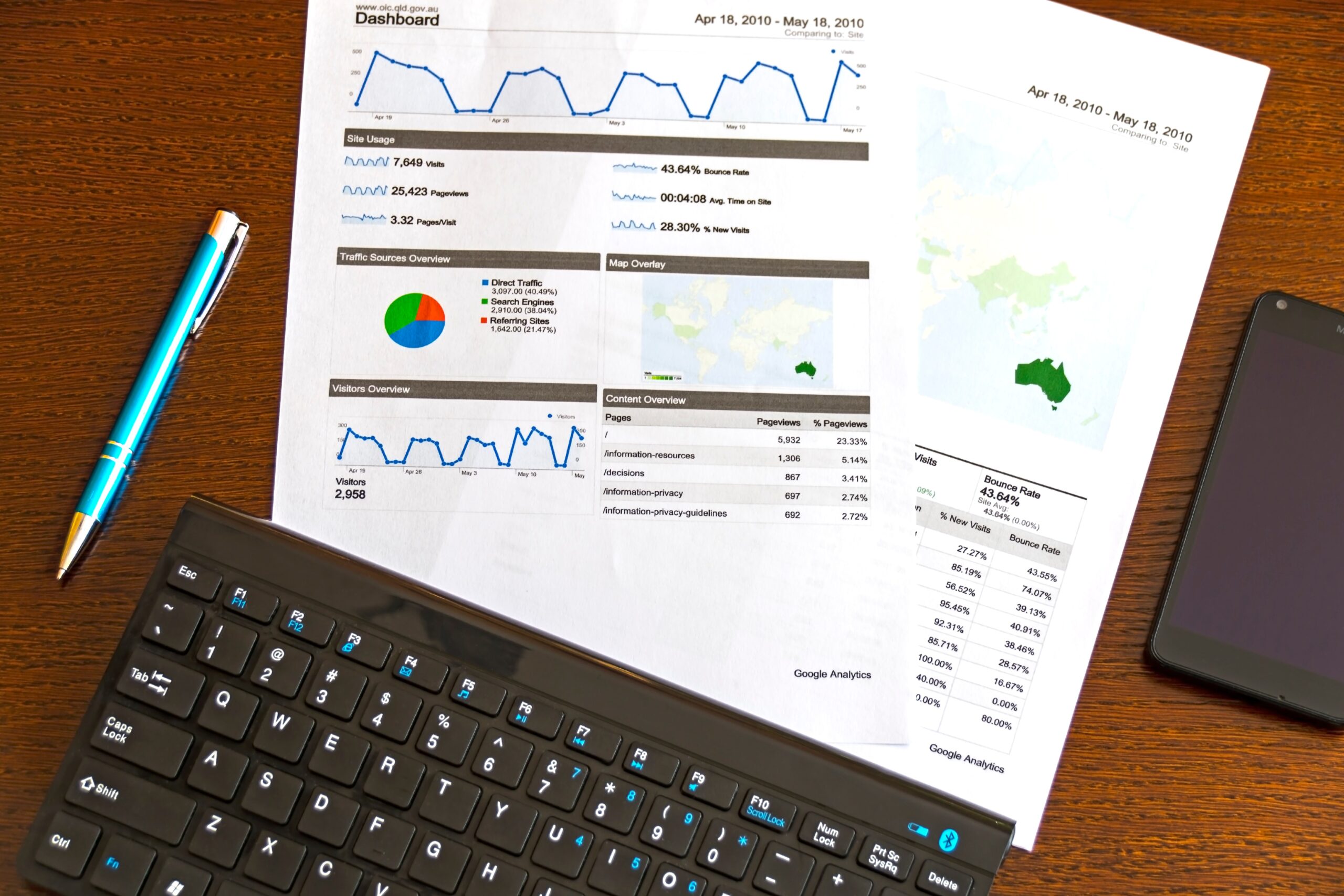40 years ago, Billboards, flyers, and newspaper/magazine were ways businesses advertise to get their brand & product known to everyone. It was the only tool that marketers had during that time and it was difficult to track different matrices such as conversion rates on these platforms as the number of people that saw the advertisement and converted through it cannot be tracked as effectively.
Fast forward 40 years later, many businesses are bringing their business online as the speed of accessing the internet and its growth has been improved exponentially. Furthermore, tracking of website traffic has become much easier and effective.

Why Should I Start Tracking My Website Traffic?
With almost more than 1.74 billion websites in 2020, it is crucial that online businesses track their traffic to see what works for their business and what does not. As bloggers & entrepreneurs that are starting out, tracking your website visitors helps you get a better understanding of articles topics and the demographics of your audiences.
In this article, I would be sharing the Benefits of Tracking your Website Traffic and how you can use it to optimize your site’s content! If you are unsure of how to install the various tracking tools, I have a free analytics guide on understanding these analytics metrics with video link tutorials on how to install these tracking tools onto your website easily!
5 Benefits of Tracking Website Traffic
Google Analytics is one of the most essential tools in tracking your website traffic. Together with Google Tag Manager and Google Search Console, the amount of data that can be collected would be beneficial in increasing your viewership and sales in your business. For the top digital marketing skills to have, you can refer to them here!
1. Knowing your Audience Demographics
As Bloggers & Entrepreneurs, we all have a target audience that we are resonating with and promoting to. However, these targeted personas/audiences sometimes may change and comes to a surprise to us in creating a new target audience.

How does this help?
An example of this is while starting my blog, my initial target audience was university students, aged 18-26, that are looking into learning digital marketing and course reviews.
However, after looking into the demographics traffic in Google Analytics, I noticed that there are also people who are above 40 years old who are looking for a career switch and looking to learn about digital marketing as well.
Knowing this helps me to cater to my content to different audiences and what resonates with them most.
This is why knowing your audience demographics through Google Analytics is important as you never know when an article or your website may attract a new target audience for you!
2. Knowing Which Pages/Articles are doing well
Knowing which pages and articles people frequent can also help with your content planning as well as knowing which pages convert best.
How does this help?
Through Google Analytics, you would be able to break down the most frequently visited Web Pages on your site, and also the most popular content as well. By knowing these popular pages, you would be able to focus your conversion efforts into these pages/articles and also promote it to get sponsors (if you’re a blogger) on popular articles.
3. Average Time on Pages

According to Quietly Insights, the definition of Average Time on-page is as straightforward as it is, “the average time someone spends on a page”. It only tracks the Average Time on Page if the visitor visits more than One Page on your Site.
How does this help?
If you have a long article and the estimated time to read the article is 5 minutes, your Average Time on Page on the article should be 3 – 5 minutes long. If you notice that you have an average Time on Page is less than 3 – 5 minutes, it could be that your article is not engaging enough to capture the audience’s attention to stay for long.
Similar to a normal webpage, if your page Average Time on Page is relatively short, it could mean that your website visitors are not paying attention to what you are selling and are leaving very quickly. That’s where you should improve and optimize your landing page to keep visitors on your page longer!
4. Keywords Ranked & Appearing
If you want to get even more traffic to your site, ranking first on Google is essential as it helps bring more visibility to your site and the topics/keywords you are ranking for.
This can be done with Google Search Console! With this, you are able to track which keywords are generating traffic to your site, the keywords you are ranked for, and which keywords are getting the most clicks to your site.
How does this help?
By knowing which keywords are bringing you traffic, you can create content similar to those keywords which are bringing you the bulk of the traffic or check what new keywords your articles are bringing in. Furthermore, you can also monitor and improve your site’s Search Engine Optimisation (SEO) ranking through the console!
5. See Where your Traffic is Coming From

Checking your traffic by seeing the source is important as it will tell you where to focus your efforts on increasing your presence.
For example, if I am constantly posting on Instagram and Facebook about my new articles but most of my traffic is coming through Organic Traffic (SEO), I could focus more on my organic traffic or find relevant Facebook groups to promote my articles better so that more traffic can come in.
Depending on how you would like to focus on bringing in more traffic, various strategies can be used!
To End Things…
So yes! There you have it! Tracking your website can help you scale your business and also helps to inform what you are doing well and what to improve on. In a data-driven generation that we are in now, these data points can greatly help move the needle on your website traffic and type of content that you are creating.
If you’ve made it this far, I would like to thank you for reading this and I hope that these tips would help you in creating better content and traffic to your site!
If you would like to learn how to install these FREE Tracking tools onto your site, I have an Analytics Guide on how you can do it EASILY in less than 1 hour!
Till the next post!



